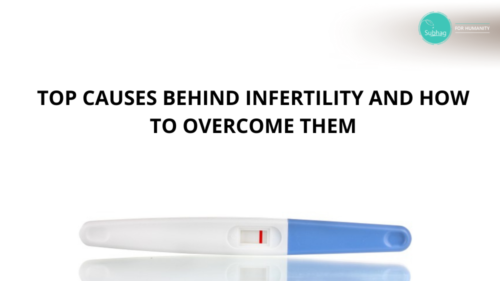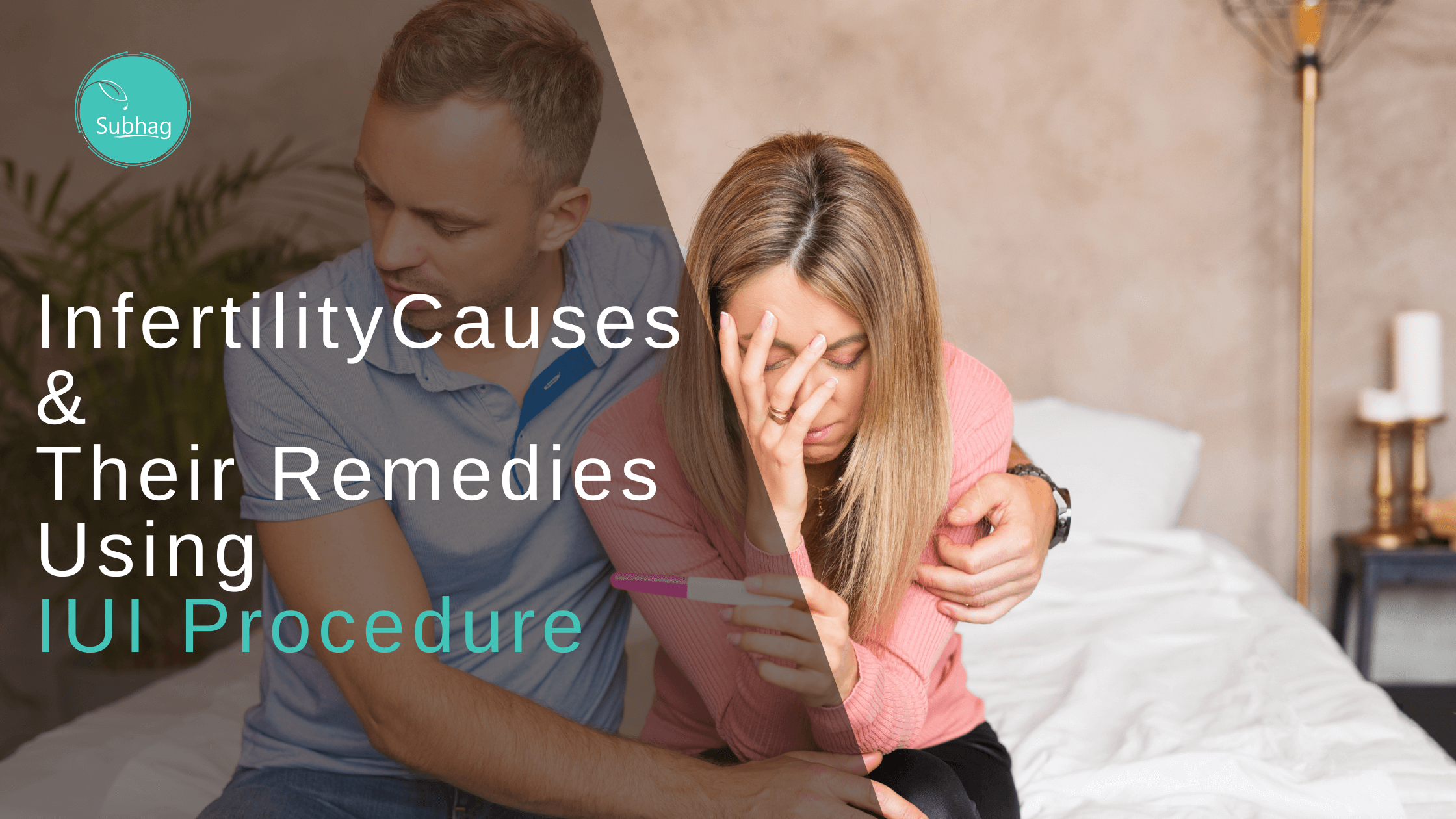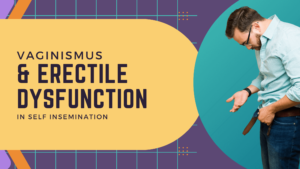We are living a very busy life and women today face so many different challenges, they have to face some of the biggest challenges that anyone could ever face, but infertility is one of the biggest.
Maybe it is because of the modern lifestyle, additional stress, or straight-out genes. But there is one thing for sure, that there are many different reasons behind it but like everything else, there are many different solutions like the IUI procedure present too. Some may be more effective than others
So Here Are Some Of The Most Common Causes And Their Remedies Using IUI Procedure
What Is Infertility All About And How Can Modern Technology Cure It?
Infertility – What Is It?
At some point in their lives, most people will have a strong desire to start a family. Understanding what constitutes normal fertility is critical in determining when an individual or couple should seek help.
The majority of couples (about 85 percent) will become pregnant within a year of trying, with the best chances of conception occurring in the first few months.
In the second year, just 7% of couples will be able to conceive. As a result, infertility is now defined as the inability to conceive in less than a year.
As a result, 15% of couples who are trying to conceive have this diagnosis. If you haven’t become successful in conceiving in the last 12 months, we recommend seeing a reproductive endocrinologist.
However, there are a number of situations in which it is advisable to seek aid sooner rather than later. These are some of them
Sporadic Menstrual Periods
When a woman has regular menstrual periods, which are defined as cycles that last 21 to 35 days, it almost invariably means she ovulates on a regular basis.
Approximately 2 weeks before the start of the next period, the egg is ovulated. If a woman’s cycles are more than 35 days apart, it could signal that she isn’t ovulating an egg on time, if at all.
The egg’s ovulation is required for pregnancy or IUI procedure. As a result, if a couple attempting pregnancy or IUI pregnancy has few or irregular menstrual periods, we recommend getting them checked out.

Females That Are 35 Years Old Or Older
The quantity of eggs produced by women decreases rapidly as they become older for unknown reasons. Furthermore, egg quality, or the possibility of a genetically normal egg, diminishes with age. As a result, if a couple has been trying to conceive for 6 months or longer and the woman is 35 years old or older, we recommend a fertility evaluation.
Sexually Transmitted Diseases Or A History Of Pelvic Infections
Inflammation and irreversible scarring of the fallopian tubes can be caused by sexually transmitted infections like chlamydia or gonorrhea. Open tubes are required for natural conception because sperm must travel through them to reach and fertilize the ovulated egg.
When a couple is trying to conceive and the woman has a history of pelvic infection, we recommend that they get evaluated very away. We will perform an HSG as part of the fertility evaluation to see if the fallopian tubes are open.
Endometrial Polyps Or Known Uterine Fibroids
Uterine abnormalities, such as fibroids that indent the endometrial cavity and endometrial polyps, can disrupt the interaction between the endometrium (uterine lining) and the embryo, lowering implantation and pregnancy rates.
In addition to irregular bleeding between menstrual cycles, many disorders can induce irregular bleeding. Women with a known history of these abnormalities or a history of bleeding between menstrual cycles should be evaluated after 6 months of trying to conceive.
Hysteroscopy, a surgical procedure in which a narrow scope with a camera is put within the uterus cavity, is the most common way of repairing or removing these uterine abnormalities. The hysteroscope can be used to introduce instruments that allow the surgeon to remove or rectify any anatomic abnormalities.
Semen Anomalies Linked To The Malefactor
If a male partner has a history of infertility with a previous partner or if his semen analysis shows abnormalities, we recommend getting a fertility exam sooner rather than later, ideally within 6 months of trying to conceive.
What Does a Fertility Evaluation Entail?
Tests For Infertility
Examining the patient’s medical history and doing a physical examination – First and foremost, your fertility doctor will take a detailed medical and reproductive history. Many of the following questions may be asked by your doctor
- How long have you been attempting to conceive?
- How frequently do you engage in sexual activity?
- Do your menstrual periods or intercourse cause you pain?
- Have you ever been pregnant?
- How did your previous pregnancies turn out?
- Have you ever experienced any sexually transmitted illnesses or pap smears that were abnormal?
- How frequently do you have menstrual periods?
- Do you have any medical issues or have you had any previous surgeries?
- Do you have a medical history in your family?
These and other questions will help your doctor create a personalized diagnostic and treatment plan for you. A physical examination may be undertaken in addition to a thorough history.
Ultrasound of the uterus, tubes, and ovaries (transvaginal ultrasound)
Ultrasound is a useful tool for assessing the structure of the uterus, tubes, and ovaries. Ultrasound can detect uterine abnormalities including fibroids and polyps, as well as ovarian abnormalities including ovarian cysts and distal fallopian tube blockage. Transvaginal ultrasound also allows your doctor to analyze the relative amount of accessible eggs. The antral follicle count is a measurement that may be related to reproductive potential.
Laboratory Testing
Your physician may order particular blood tests based on the results of the above-mentioned exam. Measurements of blood levels of certain hormones such as estradiol and FSH, which are connected to ovarian function and overall egg counts; TSH, which assesses thyroid function; and prolactin, which can alter menstrual function if increased, are the most prevalent of these tests.
Hysterosalpingogram (HSG)
This test is used to assess fallopian tubal patency, uterine filling defects like fibroids and polyps, and uterine cavity scarring (Asherman syndrome). The HSG can discover a variety of uterine and tubal abnormalities that can be surgically repaired.
Semen Analysis
The major test for evaluating a male companion is semen analysis. There are four parameters that have been investigated
- The volume of the sperm should be between 1.5 and 2 ml – A lower number could indicate a structural or hormonal issue resulting in insufficient sperm production.
- Sperm concentration – A healthy sperm concentration is at least 20 million sperm per milliliter of sperm.
- Sperm motility or movement – Normal motility should be at least 50%; a lower concentration may lead to a lower possibility of normal pregnancy without therapy, hence the need for IUI pregnancy; Motility of less than 50% may have a substantial impact on sperm’s capacity to fertilize the egg without medication; and
- Morphology, or shape – Morphology is measured in three regions of the sperm: the head, midpiece, and tail. Any abnormality in any of those areas could suggest aberrant sperm function, jeopardizing sperm’s capacity to fertilize the egg. A minimum of 5–15 percent normal forms, according to stringent morphological criteria, contributes to a superior ability for sperm to fertilize the egg. An abnormal semen analysis usually necessitates a second opinion from a reproductive urologist. If necessary, your doctor will refer you to a reproductive urologist.
What are the Most Common Infertility Causes?
Infertility: What Causes It?
Increasing Maternal Age
Prior to the late twentieth century, women were conceiving in their teens and twenties, when age-related egg defects were not visible. However, in today’s world, women are deferring childbirth until their thirties and forties, leading to the revelation of the negative effects of late maternal age on egg function.
In fact, today’s most common cause of infertility is female age-related infertility. The quantity of eggs produced by women decreases rapidly as they age for unexplained reasons.
Egg quality, or the possibility of an egg being genetically normal, declines as people get older. As a result, from the early 30s to the early 40s, a woman’s ability to conceive a normal pregnancy decreases, making them turn to IUI pregnancy. After the age of 45, a woman is rarely pregnant. This only refers to her capacity to conceive with her eggs, not donor eggs.

Ovulation Disorders
Ovulation, or the release of a mature egg, must occur on a regular basis for women to conceive naturally. Keeping a monthly calendar or utilizing an ovulation prediction kit might help you recognize ovulation. There are a variety of illnesses that can interfere with a woman’s ability to ovulate naturally.
Polycystic ovary syndrome (PCOS), hypogonadotropic hypogonadism (due to brain signaling abnormalities), and ovarian insufficiency are the most frequent illnesses that affect ovulation (from problems of the ovary).
If your periods are uncommon or irregular, your doctor will evaluate you and conduct the necessary testing to determine the nature of the problem and give treatment choices.
Occlusion Of The Tubal Canal (Blockage)
A history of sexually transmitted illnesses such as chlamydia, gonorrhea, or pelvic inflammatory disease, as mentioned above, can predispose a woman to have obstructed fallopian tubes.
Because an ovulated egg cannot be fertilized by sperm or enter the endometrial cavity, the tubal blockage is a cause of infertility. In vitro fertilization (IVF) is required if both tubes are obstructed.
If a tube is obstructed and filled with fluid (a hydrosalpinx), minimally invasive surgery (laparoscopy or hysteroscopy) is indicated before any reproductive therapies to either remove the tube or block/separate it from the uterus.
Uterine Fibroids
Uterine fibroids are fairly prevalent (about 40% of women have them), however, their presence does not always mean infertility. Fibroids are classified into three categories
- Subserosal fibroids, which are fibroids that extend more than half of the way outside the uterus.
- Intramural, in which the majority of the fibroid is contained within the uterine muscle and there is no uterine cavity indentation; and
- Fibroids that protrude into the uterine cavity, known as submucosal fibroids.
- Submucosal fibroids are a form of fibroid that has been shown to reduce IUI pregnancy rates by around 50% and to double IUI pregnancy rates when removed. In some cases, eliminating the submucosal fibroid is sufficient to resolve infertility.
- Submucosal fibroids can produce heavy periods or bleeding between periods, though this is not always the case. Intramural fibroids, where larger ones may have an impact and demand removal, are the subject of much debate.
- IUI pregnancy is unaffected by subserosal fibroids. Your doctor will check you carefully to see if you have fibroids and whether they need to be removed.
Polyps in the Endometrium
Endometrial polyps are finger-like growths in the uterine cavity that arise from the endometrium, the uterine lining. Although polyps are rarely linked to cancer (1 percent in a woman before menopause), they have been shown in some studies to reduce fertility by up to 50%.
The removal of polyps using hysteroscopy, a minimally invasive treatment, is linked to a doubling of IUI pregnancy rates. In some cases, removing the polyp is enough to cure infertility.
Male Variables That Influence Sperm Production
Male factor infertility has been linked to infertility as a contributing factor in 40-50 percent of cases and as the only cause of infertility in 15-20 percent of instances.
If a semen analysis is abnormal, it is usually repeated initially to confirm the abnormality. When the problem is established, the male spouse is directed to a reproductive urologist, particularly if it is severe.
In some circumstances, the reproductive urologist can increase sperm function by advising lifestyle changes, hormone therapies, or surgery.
However, sperm function may not improve in the majority of cases, and any attempts at pregnancy may necessitate additional treatments or operations at our clinic. Intrauterine insemination (commonly known as IUI procedure) or IVF with intracytoplasmic sperm injection are two options (also known as ICSI). Taking proper care after the IUI procedure is also very vital.
Intrauterine insemination or IUI procedure is a method of fertilization that involves washing and preparing sperm for injection into the uterine cavity, bypassing the cervix, and bringing a larger concentration of motile sperm closer to the tubes and ovulated egg.
IUI procedure requires at least one open tube, and the sperm abnormalities must be significant, otherwise, the sperm will not be able to swim to the egg and fertilize it. This process will only be successful when proper care after IUI is taken.
Intracytoplasmic sperm injection is the procedure of washing and preparing sperm for direct injection into each egg obtained throughout the IVF process.
In order to execute ICSI, a small suction pipette is used to hold an egg while one sperm is inserted into it using a very fine glass needle. This method avoids the regular fertilization process, which can be hampered by sperm dysfunction. Your doctor will thoroughly examine your sperm analysis and assist you in determining whether ICSI is the right treatment for you.
Endometriosis
Endometriosis is a disorder in which cells that are extremely similar to those that line the uterine cavity, or endometrium, are located outside of the uterus.
It affects 10 to 50 percent of reproductive-aged women and is linked to infertility, as well as pain during intercourse and/or menstrual periods. Endometriosis causes infertility by causing inflammation and scarring, which can cause pain as well as adverse consequences on the egg, sperm, or embryo.
Surgery, usually laparoscopy, is the only way to confirm endometriosis.
If endometriosis is discovered, it can be surgically removed using a variety of procedures, which may result in less pain and a better capacity to conceive naturally. Based on your medical history, physical exam, and ultrasound, your doctor will evaluate if you are at risk for endometriosis.
Other/Unexplained Factors
In certain cases, a thorough examination fails to discover the cause of infertility. Approximately 15% of the time, this happens. Even if the cause of infertility is unknown, numerous fertility treatments can help overcome the undiscovered roadblock that was preventing normal pregnancy or IUI pregnancy and lead to the birth of a healthy kid.
What Treatment Options Are Available?
Infertility Treatments
Drugs That Stimulate Egg Growth And Ovulation
There are two types of drugs that assist stimulate the ovary to create mature eggs for ovulation: tablets and injections. Clomiphene citrate is the most widely recommended tablet for ovulation stimulation (usually one mature egg).
This tablet is usually used on days 3–7 of the menstrual cycle. The following is how it works: Clomiphene is an estrogen blocker. It binds to the hypothalamus, a region of the brain that is responsible for prompting the ovary to develop and release an egg.
When clomiphene binds to estrogen receptors in the hypothalamus, it causes a rise in the production of GnRH, a key signaling hormone (gonadotropin-releasing hormone).
This hormone subsequently links to the pituitary gland in the brain, causing the production of FSH (follicle-stimulating hormone), a hormone that causes egg growth and maturation by directly binding to cells in the ovary.
Gonadotropins are the most regularly administered injections that stimulate the ovary. FSH and, in certain situations, a mixture of FSH and LH, are the gonadotropins used in these formulations (luteinizing hormone).
These injections, which are given nightly for 5–10 days, act directly on the ovarian cells to encourage egg formation. A hormone injection called HCG is commonly given once a follicle holding an egg reaches a mature size to replicate the natural LH surge that happens at the time of ovulation. This results in the egg’s complete maturation and release.
Intrauterine Insemination
When a woman is ovulating, intrauterine insemination (IUI procedure) involves injecting sperm into her uterus. Couples with unexplained infertility, LGBTQ+ families/couples, minor male factor infertility, and women with cervical mucus difficulties may benefit from this surgery, the benefit part only rings true when care after IUI is taken properly.
IUI procedure is frequently used in conjunction with ovulation-inducing medications. This medical treatment can be done with either the husband’s sperm or sperm from a donor. The woman should be checked for any hormonal imbalances, infections, or structural issues prior to the surgery and take all the required care after the IUI procedure.
Intrauterine insemination, or IUI procedure, is a procedure that involves washing and preparing sperm for injection into the uterine cavity, bypasses the cervix and provides a larger concentration of motile sperm near the tubes and ovulated egg. To do so, the semen is cleaned in sperm- and egg-safe solution before being centrifuged to separate motile sperm from immotile sperm and other cells.
Those motile and viable sperm are then deposited in a very small amount of fluid and injected into the uterine cavity using a very thin, soft, and flexible catheter in a very gentle and painless manner.
IUI procedure requires at least one open tube, and any sperm abnormalities must be minor otherwise, the sperm will not be able to swim to the egg and fertilize it. Some women are asked to take care after IUI procedure and keep lying down for around 20 min after the procedure for successful fertilization.
Insemination occurs at the time of ovulation, usually within 24-36 hours of the LH surge being noticed, or after the hCG “trigger” injection is given. A urine test kit, blood test, and ultrasound can all be used to determine ovulation.

The male partner produces a specimen, either at home or in the clinic or doctor’s office, in the instance of husband insemination. After that, the sperm is prepared for the IUI procedure. The sperm from the male partner or a third-party donor is isolated or “washed.”
Separation is the process of separating motile sperm from a man’s ejaculate and concentrating them into a tiny volume. Sperm washing removes possibly hazardous compounds from sperm that could create problems in the uterus. To deposit the semen at the time of ovulation, the doctor utilizes a soft catheter that is introduced through a speculum directly into the woman’s uterus.
IUI procedure can be combined with ovulatory drugs such as clomiphene citrate or gonadotropins, to help you get pregnant. When injectable ovulation stimulating medications are utilized in an IUI cycle, it’s critical to keep a close eye on things.
Beginning around day 6 of the woman’s cycle, she will be subjected to regular blood testing and ultrasounds. When the results of these tests show that the eggs are developed, the hCG shot will be administered.
IUI procedure can also be utilized with donor sperm that has been specifically prepared. The sperm bank transmits sperm that has already been prepared for the IUI procedure to the doctor’s office.
IUI procedure is a simple technique that can be done without an anesthetic at the doctor’s office. Although some women report moderate discomfort, it should not be severe.
In Vitro Fertilization (IVF)
The term “In Vitro” refers to research conducted outside of the body. In vitro fertilization (IVF) is a procedure in which eggs are retrieved and fertilized by sperm outside the body in an embryology laboratory.
In England, the first IVF baby was born in 1978. The United States delivered its first IVF baby not long after, and the usage of IVF has increased substantially since then. IVF was a game-changer because it allowed women who were previously thought to be forever infertile to have successful pregnancies, such as when both fallopian tubes were severely damaged.
IVF includes removing eggs from the ovary, fertilizing them with sperm in the laboratory, and then transferring the embryos into the uterus without the need for tubes.
Despite the fact that tubal illness was the first indication for IVF, many others have emerged through time. These include, among other things, maternal age, severe male factor infertility (in which case ICSI can be performed to fertilize the egg), and endometriosis.





